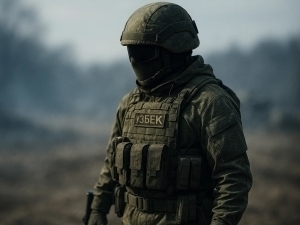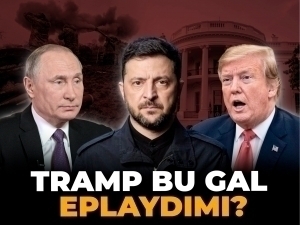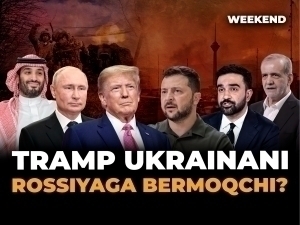From invasion to resistance: Ukraine's journey over three years
Review
−
25 February 4590 13 minutes
February 24, 2022, is the day when the world was shattered by the idea that there would be no more major wars, and this attack was called a “special military operation.” The conflicts that have been going on since 2014 were destined to eventually lead to such a war, and they did. But the “fight” between two fraternal and modern states in this way was an “unexpected event” for the people of the 21st century. Political and historical conflicts, territorial claims, and geopolitical interests were among the main reasons for this conflict.
The First Days of the Invasion
On February 21, 2022, Russian President Vladimir Putin signed a decree in the Kremlin recognizing the self-proclaimed independent Luhansk People's Republic (LPR) and Donetsk People's Republic (DPR) in eastern Ukraine, which increased the risk of an invasion of Ukraine.
On February 24, Putin announced that the Russian military had launched a “special military operation” in the Donbas region of eastern Ukraine, and Russian troops had begun an offensive into Ukraine. Putin justified this move by saying that the leaders of pro-Russian separatist forces in eastern Ukraine had sent such a request.
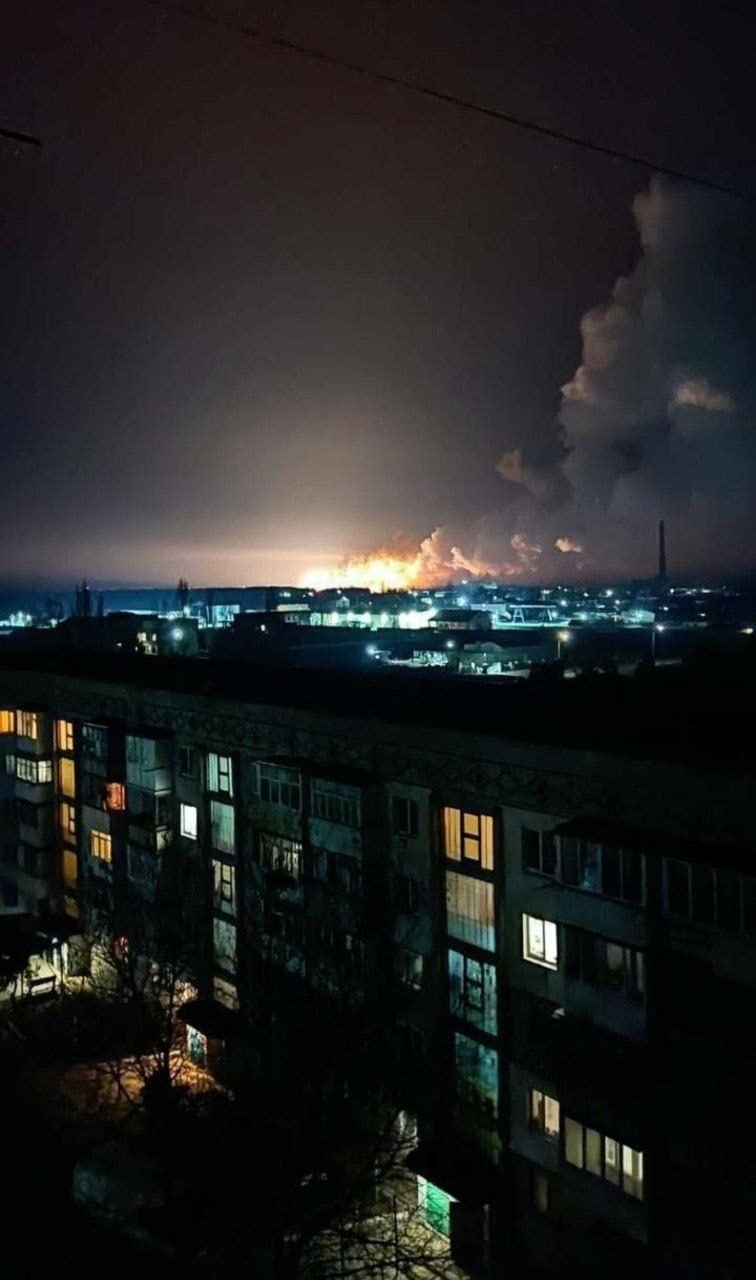
On the morning of February 24, missile attacks were launched on Ukrainian military infrastructure facilities in Kyiv, Kharkiv, and the Dnieper. This was reported on Facebook by Anton Gerashchenko, an adviser to the head of the Ukrainian Interior Ministry.
“The offensive has begun. Just now, missile strikes were launched on military command centers, airfields, and military warehouses in Kyiv, Kharkiv, and the Dnieper. The border is being shelled with artillery. Starting today, a new geopolitical reality has emerged in the world. Either Ukraine and the world stop the new Hitler now, or there will be World War III,” he wrote.
That day, Zelensky addressed Russian citizens in Russian, saying that Ukrainians “need neither cold, nor hot, nor hybrid war.” Shortly after, he severed diplomatic relations with Russia and declared martial law in the country.
On February 25, Zelensky announced a general military mobilization in Ukraine. The draft was scheduled to be carried out in several regions and cities of the country. At a time when Putin had repeatedly appealed to the Ukrainian people and soldiers to join Russia and lay down their arms, Zelensky had been calling on world leaders to form a coalition against Putin.
“I call on you to immediately stop the war against Putin, Ukraine, and the world! Form a coalition against Putin. Immediately impose sanctions, and provide financial and defense assistance to Ukraine. Close the airspace! The world must force Russia to peace,” Zelensky wrote on his Twitter page.
In response, Putin issued a warning to the countries of the world.
“Some people may have a desire to interfere in what is happening. Russia’s response will be swift and will bring consequences you have never seen before in your history. We are ready for any development of events,” he said.
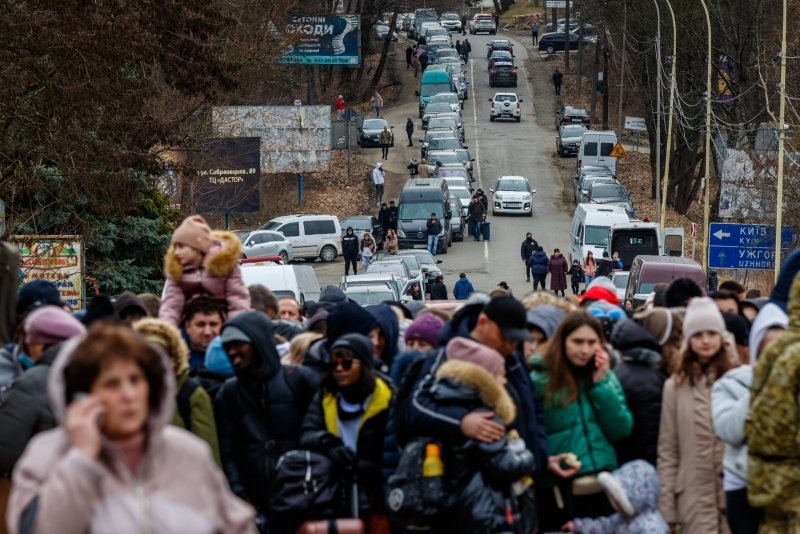
Millions of Ukrainians began to flee their homes, and long lines filled up at border posts. Those who did not want to leave their homeland were forced to hide in the subways to protect themselves from airstrikes. World leaders condemned Russia’s actions and began calling on Putin to stop the offensive. Russia was already under heavy sanctions, and on the first day of the war, the Russian rich were “poorer” by $39 billion.
Many Russians who did not want to participate in the invasion launched by Putin chose Central Asia as a temporary refuge. The regional capitals began to fill up with Russian relocators. According to some estimates, this influx may have had a positive effect on rental prices in Tashkent at that time.
Uzbekistan's Reaction
The Embassy of Uzbekistan in Kyiv began evacuating Uzbeks wishing to leave Ukraine while the cities of Kyiv, Kharkiv, and Dnipro were under air attack. Tashkent canceled all flights to Kyiv, and soon Uzbekistan Airways announced the cancellation of flights to several Russian cities. The Uzbek Foreign Ministry announced that Uzbeks in Ukraine would be evacuated via neighboring countries.
On February 25, Shavkat Mirziyoyev had a telephone conversation with Vladimir Putin. According to the Presidential Press Service, several urgent issues related to Uzbek-Russian cooperation were discussed during the conversation. The Kremlin, the Russian Presidential Administration, said in a statement that "the President of Uzbekistan expressed his understanding of Russia's actions in Ukraine during the conversation with Putin." After that, Mirziyoyev's press secretary Sherzod Asadov reported on February 25 that Mirziyoyev had exchanged views on the situation around Ukraine during a telephone conversation with Putin and that Uzbekistan was taking a restrained, neutral position regarding Russia's military actions in Ukraine.
Two weeks after the start of the war, at the second "Antalya Diplomatic Forum" held in Turkey, the heads of the Foreign Affairs Ministries of Uzbekistan and Kyrgyzstan called for an end to the war in Ukraine. On March 17, at the 24th plenary session of the Senate of the Oliy Majlis, then-Uzbek Foreign Minister Abdulaziz Kamilov said that Uzbekistan would not recognize the independence of the separatist-controlled Donetsk and Lugansk People's Republics in eastern Ukraine. The minister noted that the situation around Ukraine was a cause for serious concern in Uzbekistan and expressed official Tashkent's support for finding a peaceful solution to the situation and resolving the conflict through political and diplomatic means.
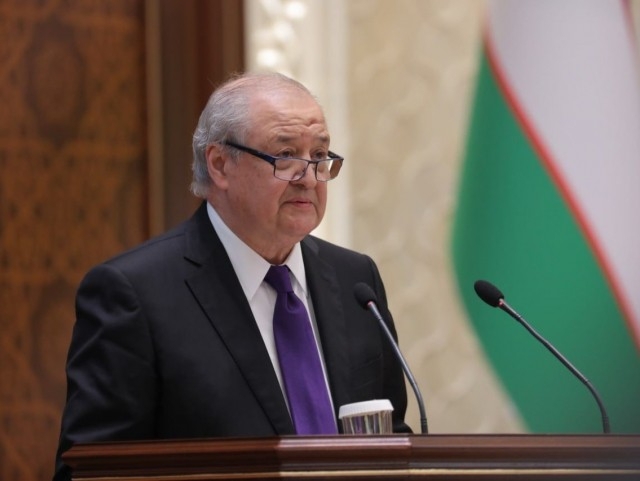
Shortly thereafter, Minister Kamilov's health was reported to have deteriorated, and he was relieved of his post. Some attributed this to his attitude towards the Russian invasion. Interestingly, Abdulaziz Hafizovich Kamilov, who had health problems, was appointed Deputy Secretary of the Security Council under the President for Foreign Policy and Security. Less than two months later, Kamilov took up the post of Special Representative of the President for Foreign Policy.
Ukraine's Losses
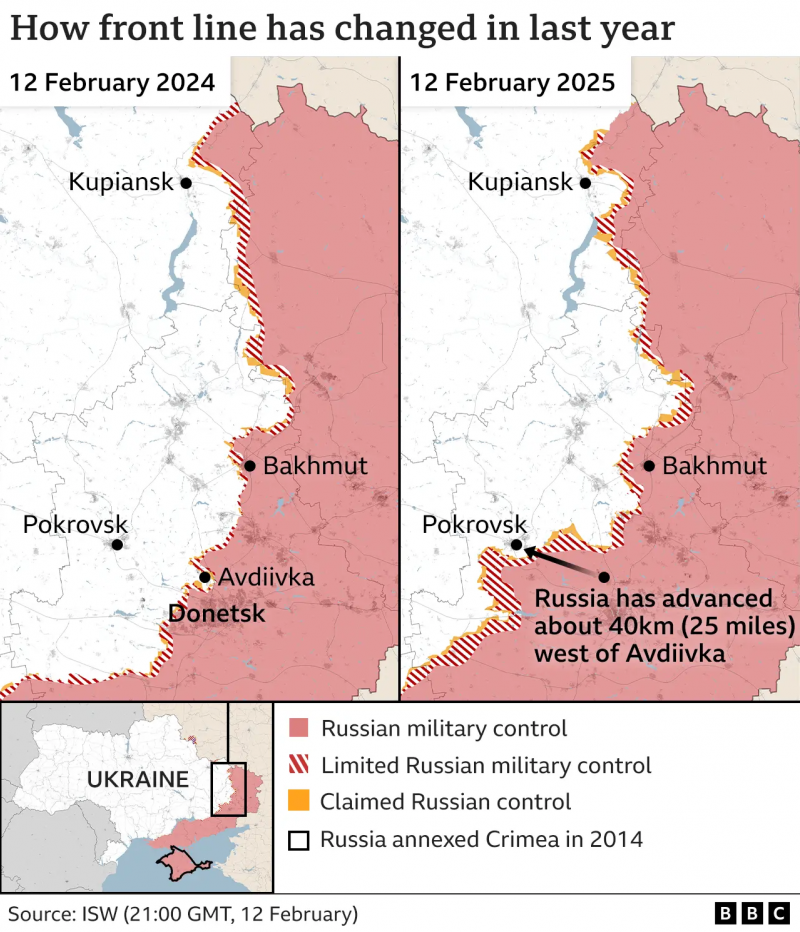
According to foreign media, since the beginning of the invasion until today, Ukraine has lost control over about 11 percent of its territory. Including the territories lost since 2014, Ukraine has lost about 18 percent of its territory to Russia. As the invasion continues, as of February 20, 2025, a large part of Donbas, including parts of Luhansk and Donetsk regions, remains under Russian control. Some of these territories have been controlled by Russian-backed separatists since 2014. Crimea, which was annexed by Russia in 2014, also remains under Russian control. Some areas were previously occupied by Russian military forces but were later returned to Ukrainian control.
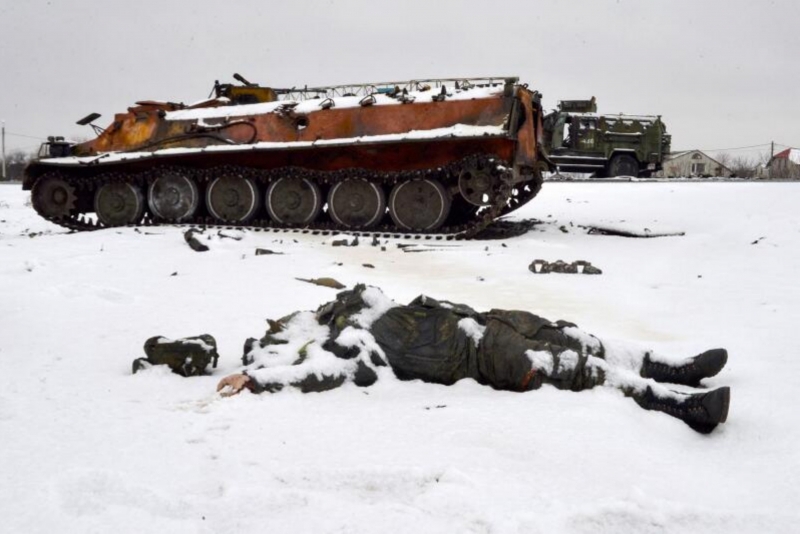
It is not just land that is being lost; in December 2024, President Volodymyr Zelensky announced that 43,000 Ukrainian soldiers and officers had been killed. The Ukrainian losses website, which compiles data on casualties from open sources, currently lists more than 70,400 names of Ukrainian soldiers.
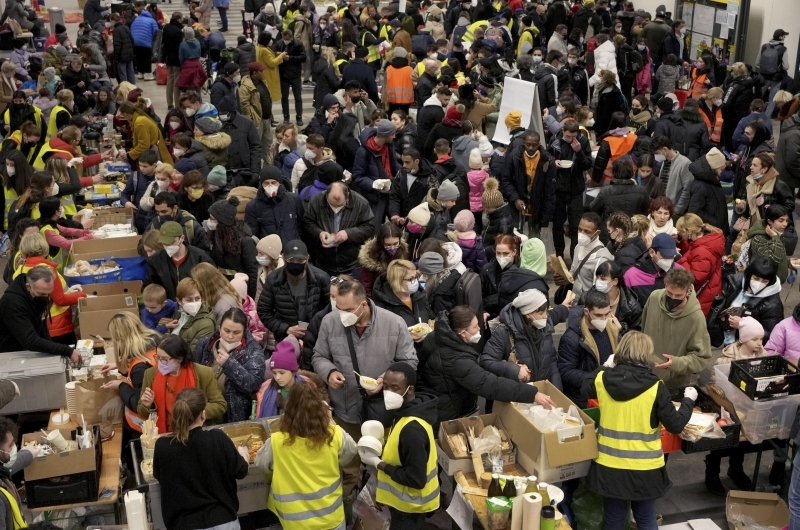
Millions of Ukrainians have also been forced to flee their homes since the Russian offensive began or after their homes were directly destroyed. The UN reported that as of February 2025, there were about 7 million Ukrainian refugees worldwide, of which more than 6.3 million live in European countries. An estimated 3.7 million people have also been displaced within Ukraine.
According to the UN Human Rights Office, more than 41,000 civilians have been killed or injured in the conflict in Ukraine, most of them from explosive weapons. More than 8,400 Ukrainians were killed in 2022 alone, nearly 2,000 in 2023, and more than 2,000 in 2024. Another 139 people have died in the war so far in the first two months of 2025.
Since the beginning of Putin's invasion, at least 350,000 buildings, millions of square meters of housing, educational, medical, and sports infrastructure, and thousands of kilometers of roads and railways, airports, and ports have been destroyed or damaged to some extent in the country. In particular, cities such as Mariupol, Volnovakha, Severodonetsk, Maryinka, Soledar, Avdeevka, and Bakhmut have been reduced to ashes.
The Massacre of Bucha and Izyum
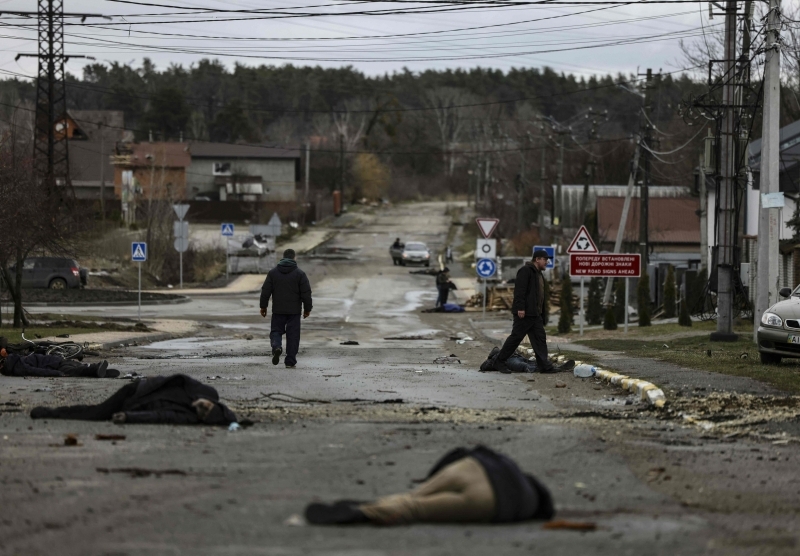
The large-scale invasion also covered the Kyiv region. However, many cities were liberated in the first month of the invasion thanks to counterattacks. On April 2, 2022, it was announced that Kyiv had been completely cleared of the invaders. Less than a month and a half after the invasion began, the city of Bucha experienced very terrible scenes. The whole world's media began to be filled with information about the atrocities of the invaders. Images of the massacre of people with their hands tied in Bucha, the bodies of naked women lying on the side of a road in the Kyiv region, and other such atrocities shocked the world. Bucha was littered with bodies, most of the victims were shot in the back of the head with their hands tied. Ukrainians were buried in mass graves, while some bodies were dumped in the middle of the streets. But the Russian Defense Ministry called these reports a “provocation” and “staged.” They claimed that during the time Bucha was under Russian control, “not a single resident suffered from acts of violence,” while Ukrainian troops shelled the southern districts of the city “day and night.”
Shortly after, when the truth about the Bucha events became clear, world powers sharply condemned Russia. The United States and the European Union began to tighten new sanctions packages against Russia. Forty-two countries filed complaints against Russia with the Hague Tribunal.
Five months after the Bucha genocide, the Russian invaders committed another massacre. This time, the bloodied area was the city of Izyum in Kharkiv. In early September 2022, the Ukrainian Armed Forces successfully counterattacked in the Kharkiv region, liberating almost all the occupied territories of the region. On September 10, the Ukrainian Armed Forces announced the liberation of Izyum from the invaders. But less than a week later, Ukrainians were once again faced with the same scene that had occurred five months earlier in the city of Bucha, Kyiv region.
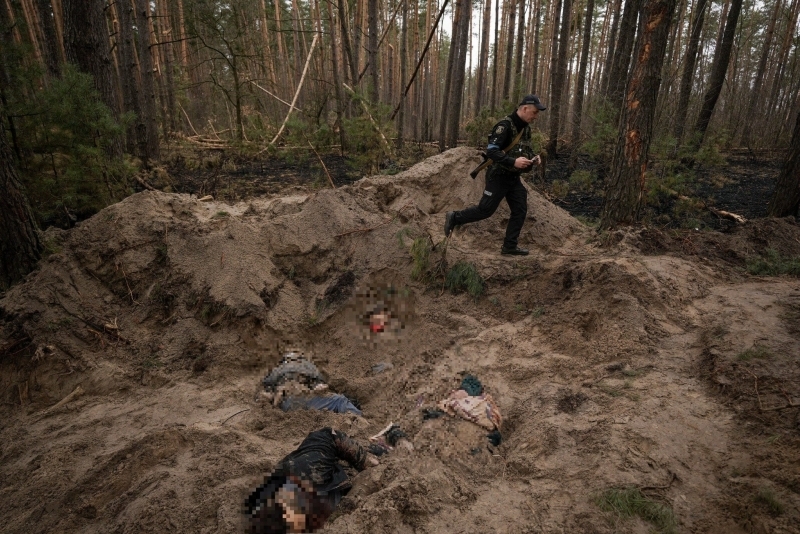
Exhumations of bodies, that is, the removal of human remains from the graves, were underway at a mass grave near Izyum. By September 23, 427 bodies of Ukrainians had been exhumed from the mass grave. Of the bodies, 202 were women, 189 were men, and 5 were children. But they were not the last victims buried in Izyum. A few days later, two more mass graves were discovered in the city of Izyum, which had been liberated from Russian occupation.
Aid to Ukraine
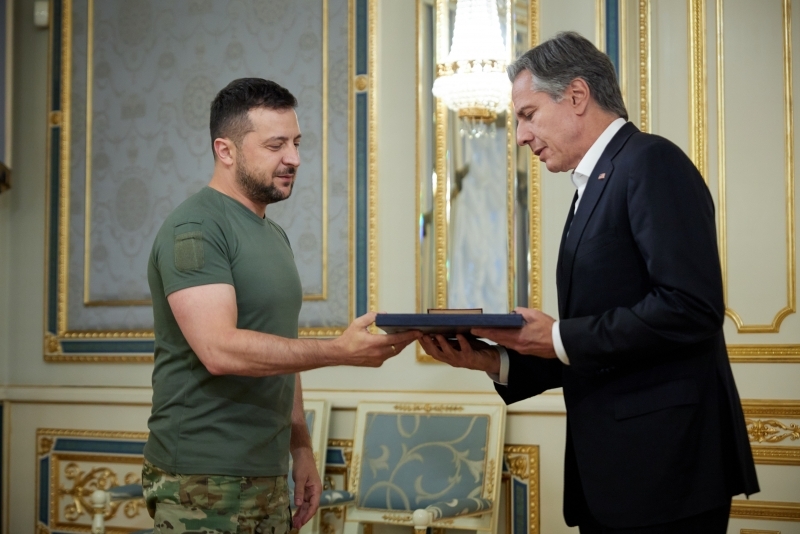
Throughout the three-year war, Ukraine has received a total of about 267 billion euros in aid, amounting to more than 80 billion euros per year. Of this, almost half—130 billion euros (49 percent)—was allocated for military aid, 118 billion euros (44 percent) for financial aid, and 19 billion euros (7 percent) for humanitarian aid. It is no secret that Ukraine has been supported by the European Union and the United States throughout this conflict. In general, Europe has surpassed the United States in assisting Ukraine—it has allocated 70 billion euros for financial and humanitarian aid and 62 billion euros for military aid. The United States, on the other hand, has spent 64 billion euros on military aid and 50 billion euros on financial and humanitarian aid.

Zelensky, however, provided slightly different figures for defense spending during the invasion. When Trump claimed that the total amount of money the United States spent on Ukraine was 350 billion dollars, Zelensky responded by saying that defense costs a total of 320 billion, and the United States' share was 67 billion.
The decline in US aid was already noticeable in mid-2023. It even seems that Trump, who came to the “US throne,” is not going to “arm” Ukraine this time. He promised to end the war within 24 hours in his election programs, and although he did not achieve this after taking office, he does not hide the fact that he is trying to put an end to the war by siding with Putin, and one can even say that he has entered into a personal battle with Zelensky.
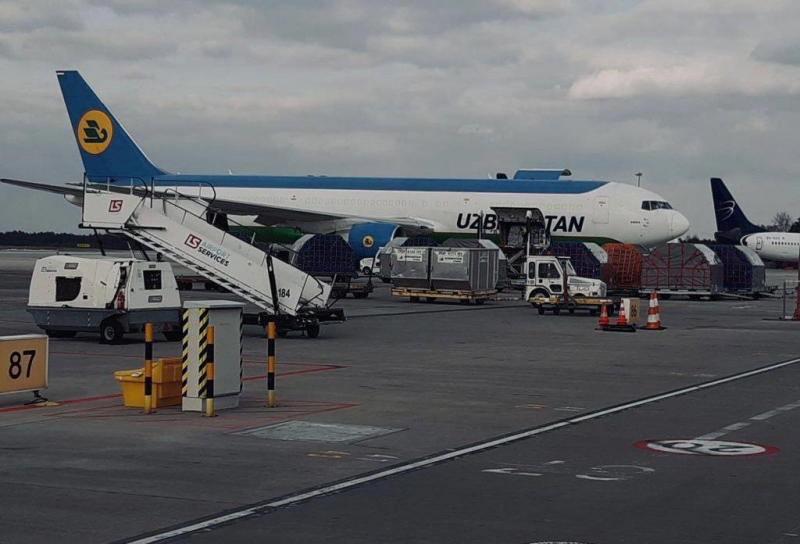
Uzbekistan also sent humanitarian aid to Ukraine several times in the first months of the war. For example, in April 2022, it sent more than 34 tons of humanitarian aid, consisting of medicines, individual medicine boxes, long-term food products, and products of 21 positions, totaling more than 400 thousand pieces.
Damaged Infrastructure
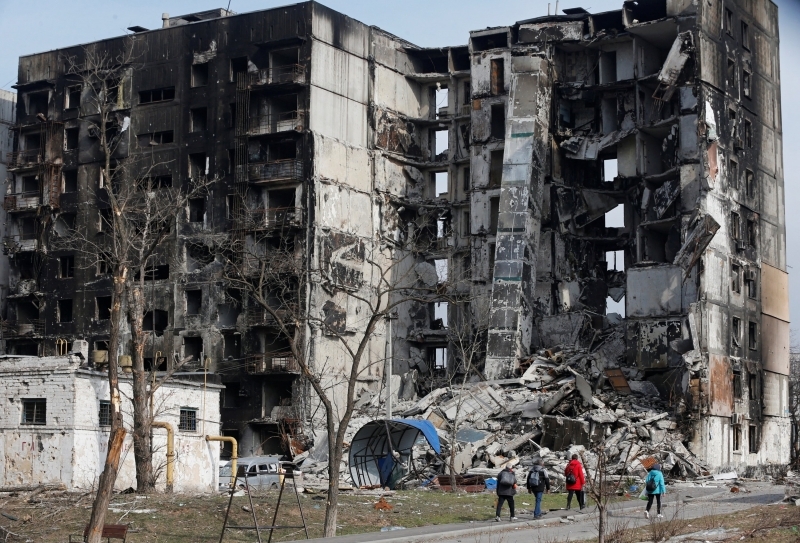
As of November 2024, Ukraine's infrastructure has suffered $170 billion in damage since the Russian invasion began. In particular, the housing sector suffered $60 billion; transport infrastructure suffered $38.5 billion; the energy sector suffered $14.6 billion; industry, construction, and services suffered $14.4 billion; and agriculture suffered $10.3 billion. In addition, the education sector suffered $7.3 billion; healthcare suffered $4.3 billion; cultural heritage and sports infrastructure suffered $4 billion; housing and communal services suffered $3.5 billion; and telecommunications suffered $1.2 billion.
Russia Under Sanctions
The European Union imposed a raft of sanctions on Russia after Putin signed a decree recognizing the self-proclaimed independent Luhansk and Donetsk people's republics in eastern Ukraine. Today, another package was announced to mark the third anniversary of the invasion, bringing the total number of such sanctions to 16. The latest package cuts off 13 Russian banks from the SWIFT payment system. Eight "Russian-controlled" media outlets in Europe have been banned from broadcasting. Fifty-three entities have been added to the list of those supporting the Russian military-industrial complex.
It is noteworthy that among them there is also an organization operating in Uzbekistan. According to the report, one-third of these structures belong to Russia, while the rest are located in third countries (China, including Hong Kong, India, Kazakhstan, Singapore, Turkey, the United Arab Emirates, and Uzbekistan) and are involved in circumventing trade restrictions or purchasing drones and missiles used for Russian military operations.
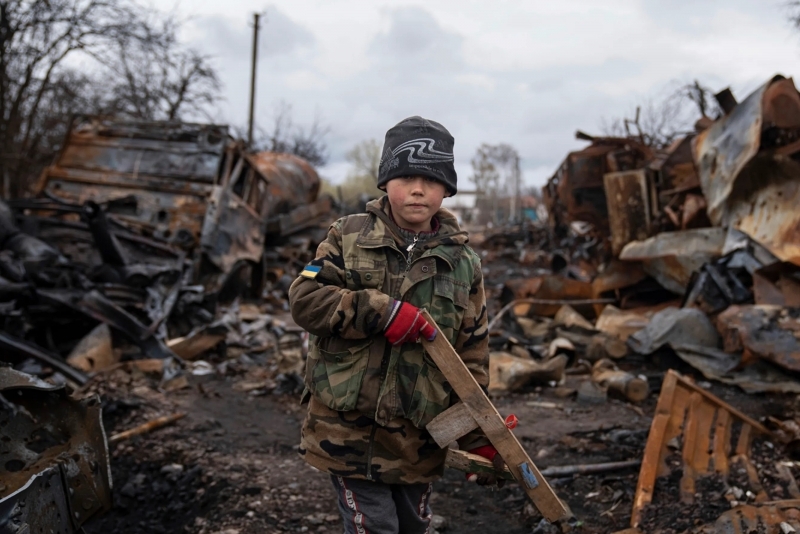
It can be said that the conflict between Ukraine and Russia has affected the political and economic balance not only of the two countries but also of the entire world. Following the military clashes, the global energy crisis, the threat to food security, and geopolitical confrontations have intensified. When and how this conflict will end remains unclear. Whether diplomatic negotiations will yield results or not is still an open question. But one thing is certain: the conflict has caused and continues to cause unprecedented losses for both countries. The greatest damage has been inflicted on ordinary citizens.
Today, it can be said that the issue of conducting negotiations and ending the invasion is closer than ever. Even Trump's current bad temper may not be a hindrance to this process. Because the main point of his "insults" to Zelensky is only the equal distribution of Ukraine's wealth and, through this, the return of the US aid provided for 3 years. Most likely, he is not interested in the legitimacy of Zelensky's power or any other aspects. His return to the White House has only increased the number of such interests in Ukraine, where geopolitical interests clash. And Russia's invasion of Ukraine continues. The front does not stand still. But still, the end of the invasion seems to be near...
Live
AllUkraina dronlari Moskvaga hujum qilmoqda.
14 December
14 December
14 December
14 December


